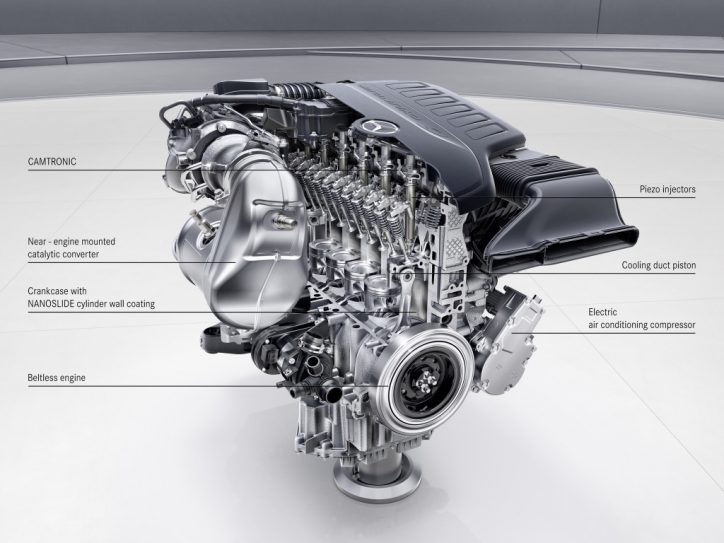Inline-Six Mercedes Engine Vs the V6 Power Unit
Giancarlo Perlas November 2, 2016
Mercedes-Benz just announced that it will be introducing four new engines. One of them, the petrol-powered inline-six Mercedes engine called the “M256,” will debut in the facelifted 2017 Mercedes-Benz S-Class.
So does that mean Mercedes is already returning to its roots after using the V6? It should be noted that when the V6 was introduced in 1998, it was claimed that it would pose as a better alternative to the inline-six. Therefore, it was expected that the V6 will render the inline-six obsolete.
However, with the advancements in Mercedes engine technology, it seems the inline-six will make its comeback. Here are the reasons why it will be better than the current V6:
1. More Power
Mercedes claims the new inline-six engine will generate more power than the existing M276 V6 unit. In fact, the M256 can even serve as a replacement to the V8 engine, according to R&T.
As we have mentioned earlier in our report, the 3.0-liter M256 can produce at least 408 hp and 368 lb-ft of torque. The 3.0-liter V6 can only give away at least 333 hp and 354 lb-ft of torque. Note that the horses produced by the new inline-six are even higher than the output of the 2017 Mercedes-AMG E43. The car’s 3.0-liter biturbo V6 is only capable of dishing out 396 hp, but its torque is higher at 384 lb-ft.
Turbo lag is also lessened in the setup of the new Mercedes engine thanks to its electric auxiliary compressor enabling it to spool up to 70,000 RPM in merely 300 milliseconds.
2. Easier to Develop
The new turbocharger of the M256 has an Intergrated-Starter Alternator (ISG). The component manages the car’s water pump and air conditioning compressing. The feature renders drive belts irrelevant making the new engine shorter in length and lighter in weight than the current V6.
R&T pointed out too that the V6 is simply a cut down version of the V8. The two share the same parts except the number of cylinders, but the design poses a lot of flaws. One of them is uneven firing caused by the removal of the two cylinders from the V8 design. In comparison, the inline-six does not require a complex hardware for smooth operation since its cylinders are arranged in a linear position.
3. Reduce Fuel Consumption and Less Carbon Dioxide Emissions
Mercedes said the CO2 emission of the M256 is 15 percent less than the present V6. The simpler setup and improved energy recovery of the new inline-six Mercedes engine makes it more fuel-efficient as well.



